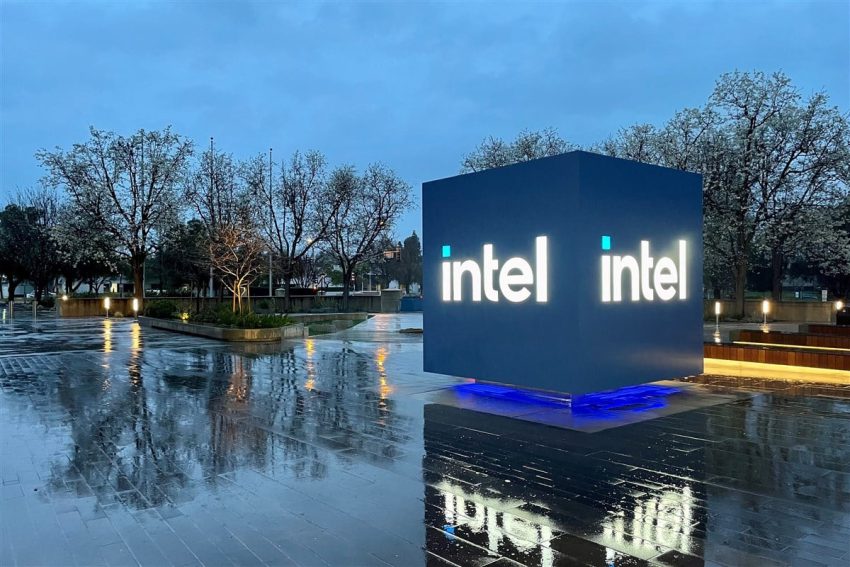Following an intraday high of $24.19., shares of Intel Corporation (NASDAQ: INTC) increased 0.5% on Friday, ending at $24.08 after peaking at $24.19. Despite below-average trading volume (24.9 million shares), which was 65% less than the stock’s normal daily volume of 71.6 million shares, there was a minor rebound.
Sentiment Is Affected by Q4 Earnings Miss and Weaker Outlook
Following a dismal Q4 results release on January 30th, Intel recently seen a surge.
- EPS: The chipmaker’s $0.02 loss per share fell $0.14 short of the consensus forecast of $0.12.
- A startling -35.32% net margin, which reflects Intel’s continuous difficulties with profitability.
-3.27% return on equity suggests ongoing operating difficulties. - Analysts predict Intel will report a full-year EPS loss of $0.11 for 2025, despite the stock’s recent surge, underscoring the difficult path ahead for the semiconductor behemoth.

Analyst Attitude: Wary to Negative
- For the most part, Wall Street is either neutral or pessimistic about Intel.
- In an indication of additional negative risk, JPMorgan Chase & Co. recently lowered its price objective from $26.00 to $23.00 while keeping its “underweight” rating.
- In addition, UBS Group downgraded its goal from $26.00 to $23.00 and gave the company a “neutral” rating.
- One of the more pessimistic predictions on the Street, Rosenblatt Securities reaffirmed its “sell” rating with a $20.00 price target.
- According to MarketBeat data, Intel has been rated as a “sell” by four experts overall, a “hold” by twenty-eight, and a “buy” by just one.
- The consensus price objective for the company is $27.04, which is little higher than its present position but indicates little room for growth.
The financial situation of Intel: Contradictory Signals
With a current market valuation of $106.19 billion, Intel has:
- Moderate leverage is indicated by the debt-to-equity ratio of 0.44.
- The quick ratio of 0.98 and the current ratio of 1.33 indicate sufficient liquidity to meet short-term obligations.
- With the stock’s 50-day and 200-day moving averages at $21.85 and $21.96, respectively, the latest price movement is bringing Intel just over its long-term trend line.
Institutional Operations: Low Inflows
- The size of institutional investors’ holdings in Intel has been steadily growing.
- In the fourth quarter, Cornerstone Advisory LLC increased its holdings by 4.3%, acquiring 9,863 shares valued at $198,000.
- With a 4.0% increase in ownership, CFM Wealth Partners LLC currently owns 13,114 shares valued at $263,000.
- The fact that 64.53% of Intel’s outstanding shares are owned by institutional investors and hedge funds indicates that long-term investors continue to believe in the company’s prospects.
Difficulties Ahead: AI Competition and Leadership Transition
Leadership changes and Intel’s stock momentum are correlated, which may indicate a change in strategy. However, the business is up against more competitors in the AI and chipmaking space, including Taiwan Semiconductor Manufacturing Company (TSMC), AMD (AMD), and Nvidia (NVDA).
Intel has had difficulty leveraging the rapidly expanding AI market, thus its approach is still uncertain.
Concerns over the company’s long-term competitiveness are still raised by its manufacturing delays and underperforming foundry division.
Conclusion: Slow Recovery, but Hazards Still Exist
- Although there is some hope due to Intel’s recent surge, long-term investors should avoid it due to its poor profitability, restricted growth possibilities, and cautious analysts.
- The majority of analysts recommend keeping or selling the stock, even though institutional inflows indicate some optimism.
- Given that Intel is selling below its long-term averages and is up against intense competition in the semiconductor and artificial intelligence industries, investors might want to hold off on starting or growing investments until there are more distinct indications of a rebound.

